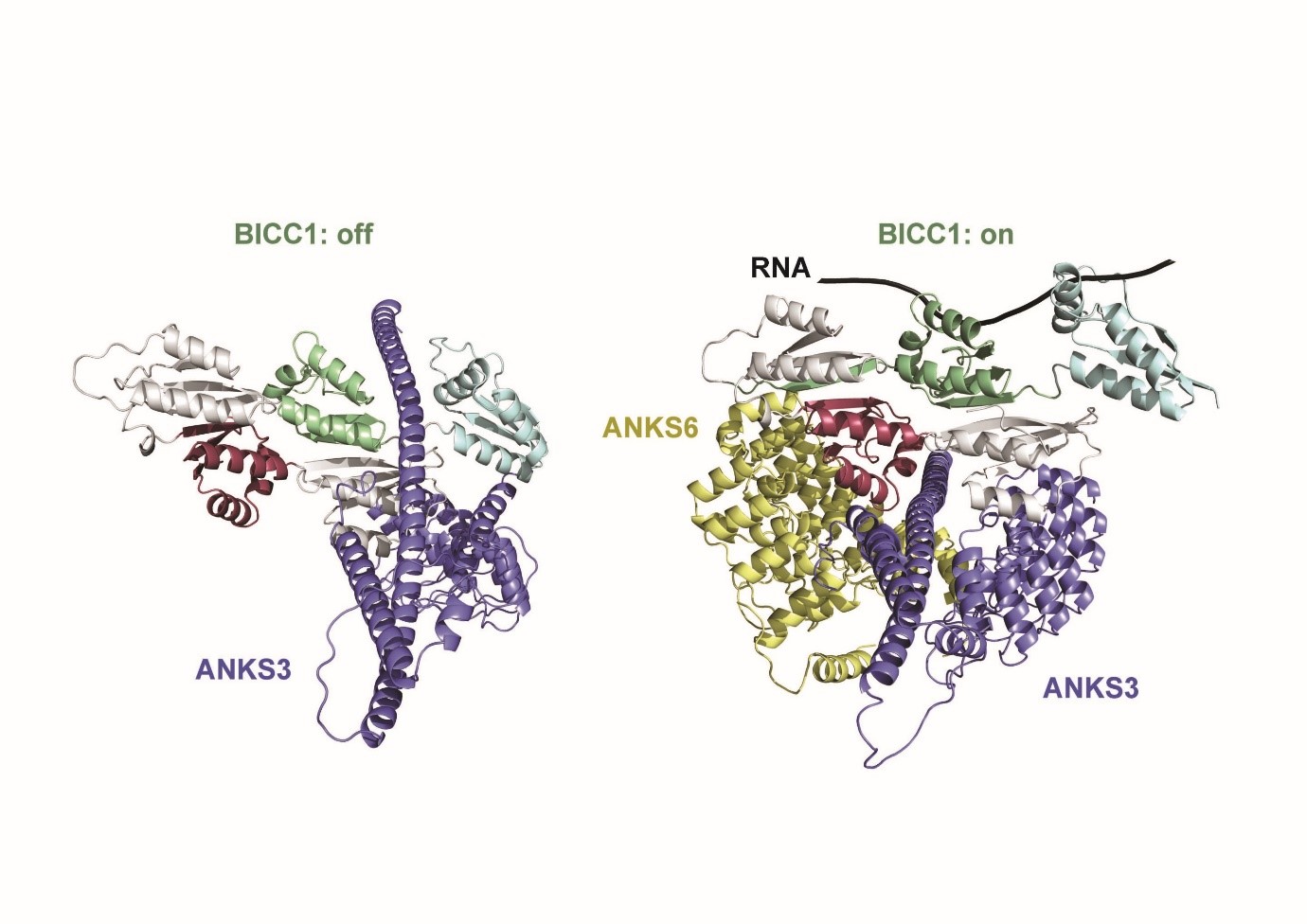The Dance of Organ Positioning: A Tango of Three Proteins
Cells use cilia, antenna-like structures, to sense their environment, including fluid flow outside the cell. Genetic defects that disrupt cilia function can lead to ciliopathies like polycystic kidney diseases and affect the positioning of internal organs during embryonic development, known as "organ laterality." For example, the correct placement of the heart and its blood vessels is crucial for efficient oxygen distribution in the body. Understanding the molecular mechanisms behind cilia's sensory functions is vital for regulating organ laterality, according to Professor Daniel Constam at EPFL's School of Life Sciences.

Figure 1. The Dance of Organ Positioning: A Tango of Three Proteins
Figure 1 shows in a recent study, scientists led by Professors Daniel Constam and Matteo Dal Peraro at EPFL have made a significant discovery. They found that the factor responsible for specifying organ laterality, activated by cilia's flow-sensing ability, is under tight regulation by two other proteins associated with ciliopathies. [1] These proteins' molecular functions, which were previously unclear, play a crucial role in this process. The study's findings are published in PLoS Biology.
Previous research indicated that the flow stimulation of cilia plays a crucial role in determining left-right asymmetry by activating the Bicaudal-C1 (BICC1) protein. BICC1's function involves binding to specific messenger RNAs (mRNAs) within cells and accelerating their decay, but this occurs specifically on the future left side of the body. Essentially, BICC1 acts as a switch controlling the type, location, and quantity of tissue "manufactured" on that side. However, what was previously unknown was how this mRNA-binding activity of BICC1 is regulated.
In the new study, researchers unveiled that the regulation of mRNA binding by BICC1 is a complex process involving two other proteins, ANKS3 and ANKS6. These proteins interact intricately within a network to jointly control BICC1's mRNA-binding activity. Researchers investigated the roles of ANKS3 and ANKS6, as these proteins were recently linked to regulating organ laterality. ANKS6 is also associated with mutations in some nephronophthisis patients. However, the molecular functions of ANKS3 and ANKS6 remained unclear.
The study revealed that ANKS3 and ANKS6 collaborate with BICC1 in a complex molecular interaction. ANKS3 competes with messenger RNAs (mRNAs) for binding to BICC1. However, ANKS6 modulates ANKS3's interaction with BICC1, influencing whether BICC1 can access specific mRNAs or not. This intricate interplay between ANKS3, ANKS6, and BICC1 regulates mRNA binding, shedding light on the molecular mechanisms behind organ laterality.
The study's findings regarding the intricate protein-RNA interaction networks have implications for fundamental biology and the potential treatment of genetic disorders. Typically, multivalent protein-RNA interaction networks are influenced by disordered regions within proteins. However, the research led by Professor Constam uncovered that the BICC1 network operates differently. It is mediated by specific surfaces of well-structured protein domains, which can either compete or cooperate with each other. The collaboration between ANKS3 and ANKS6, allowing BICC1 to bind to specific mRNAs, introduces a novel paradigm in the regulation of gene expression. This discovery offers valuable insights into fundamental biological processes and holds promise for developing treatments for genetic disorders.
Apart from advancing our fundamental knowledge of organ development, the study's findings also pave the way for vital research on how this intricate molecular switch can be harnessed by cilia and applied in potential therapies for genetic disorders. Specifically, the research's significance lies in addressing ciliopathies, a group of disorders where the ability of cilia to sense flow is impaired.
According to Daniel Constam, the primary impact of their discoveries will be in the context of ciliopathies. [2] These congenital defects in organ laterality may not be within reach for curative treatments in the near future. However, the focus is on restoring cilia's sensory functions, which is of utmost importance for severe chronic conditions like polycystic kidney diseases and nephronophthisis. This research provides valuable insights that could contribute to potential therapies for such debilitating genetic disorders.
References:
- https://sciencenewsnet.in/organ-positioning-dance-a-trio-of-proteins-tango/
- https://phys.org/news/2023-09-positioning-tango-proteins.html
Cite this article:
Janani R (2023),The Dance of Organ Positioning: A Tango of Three Proteins,Anatechmaz,pp.761

